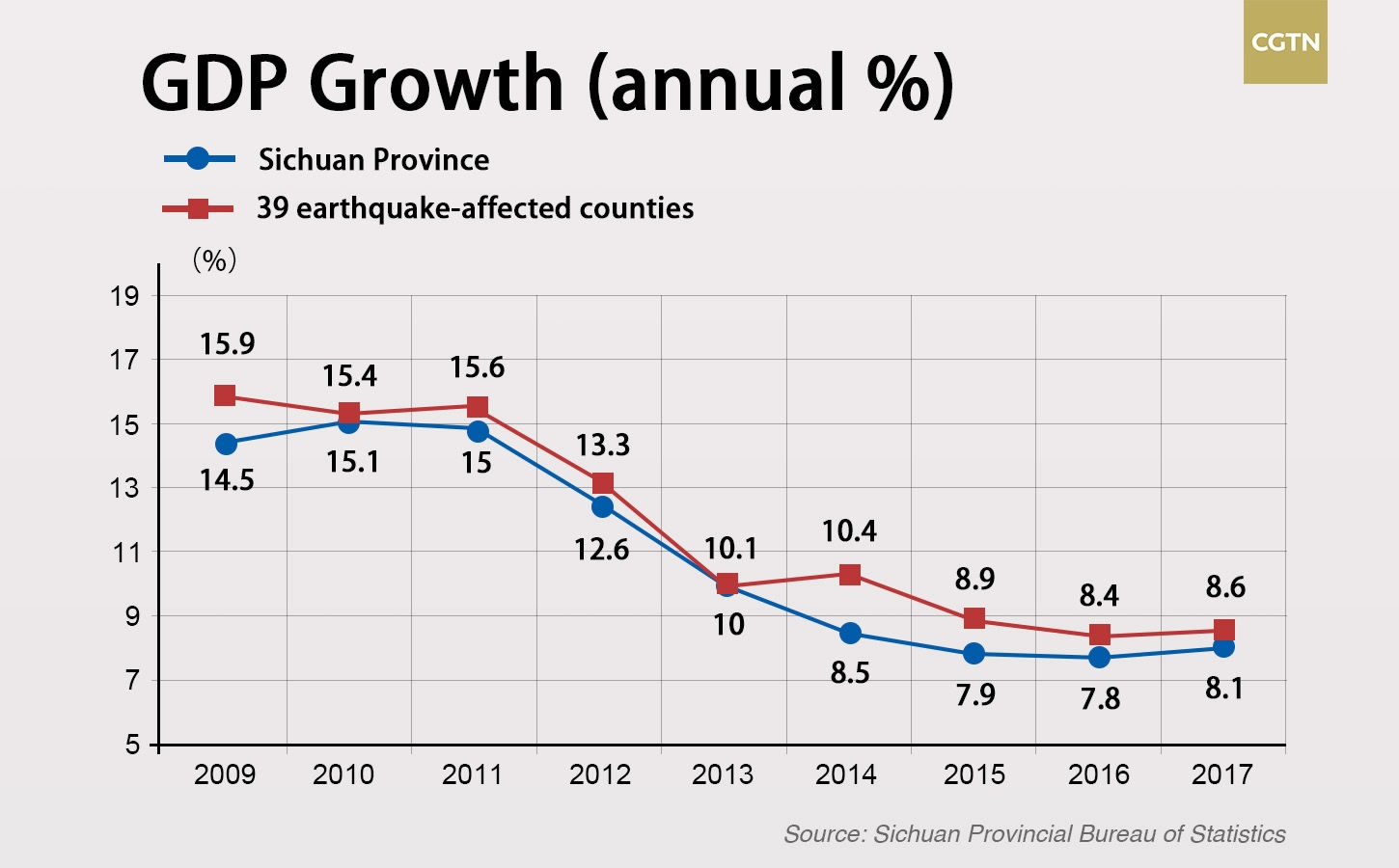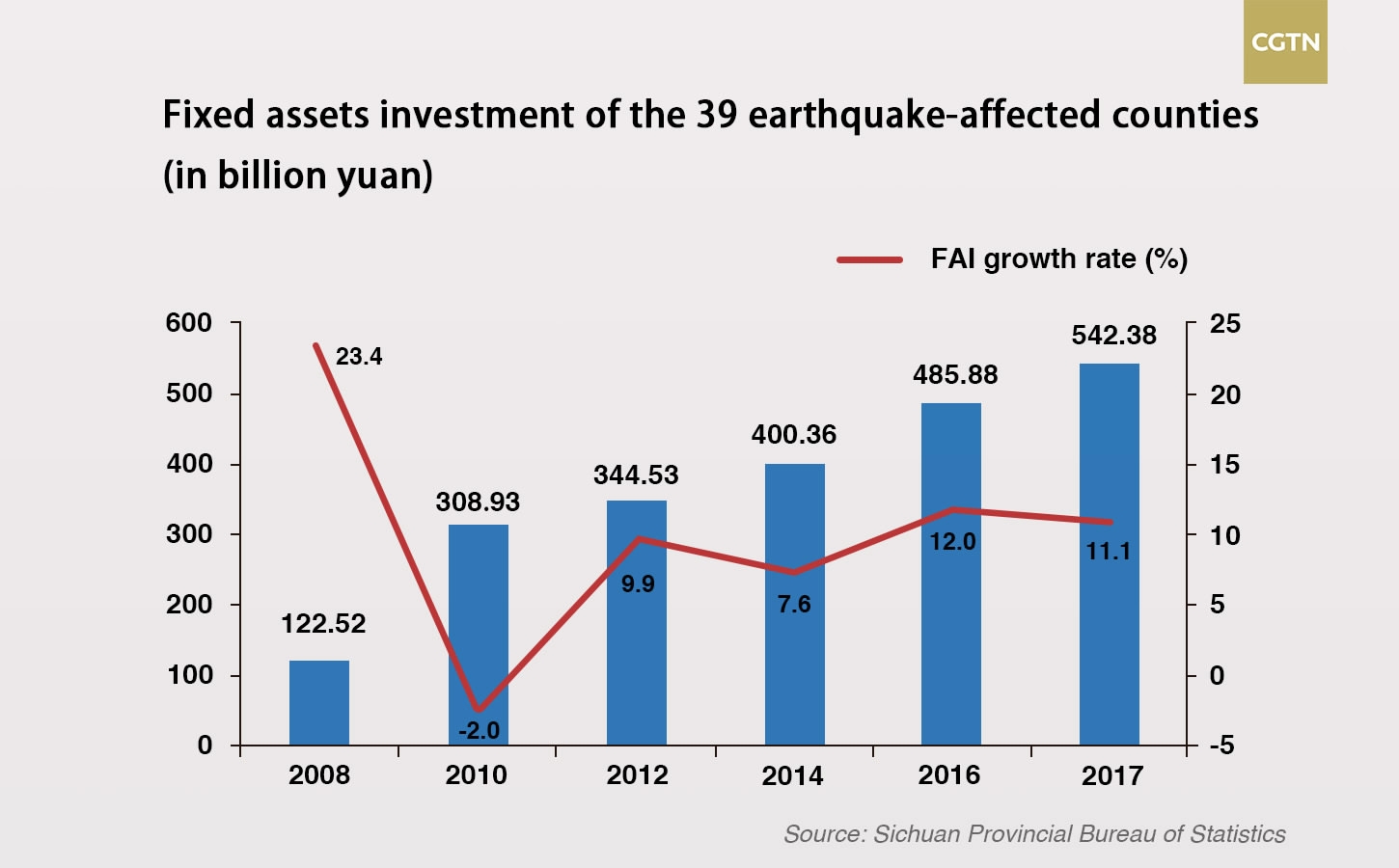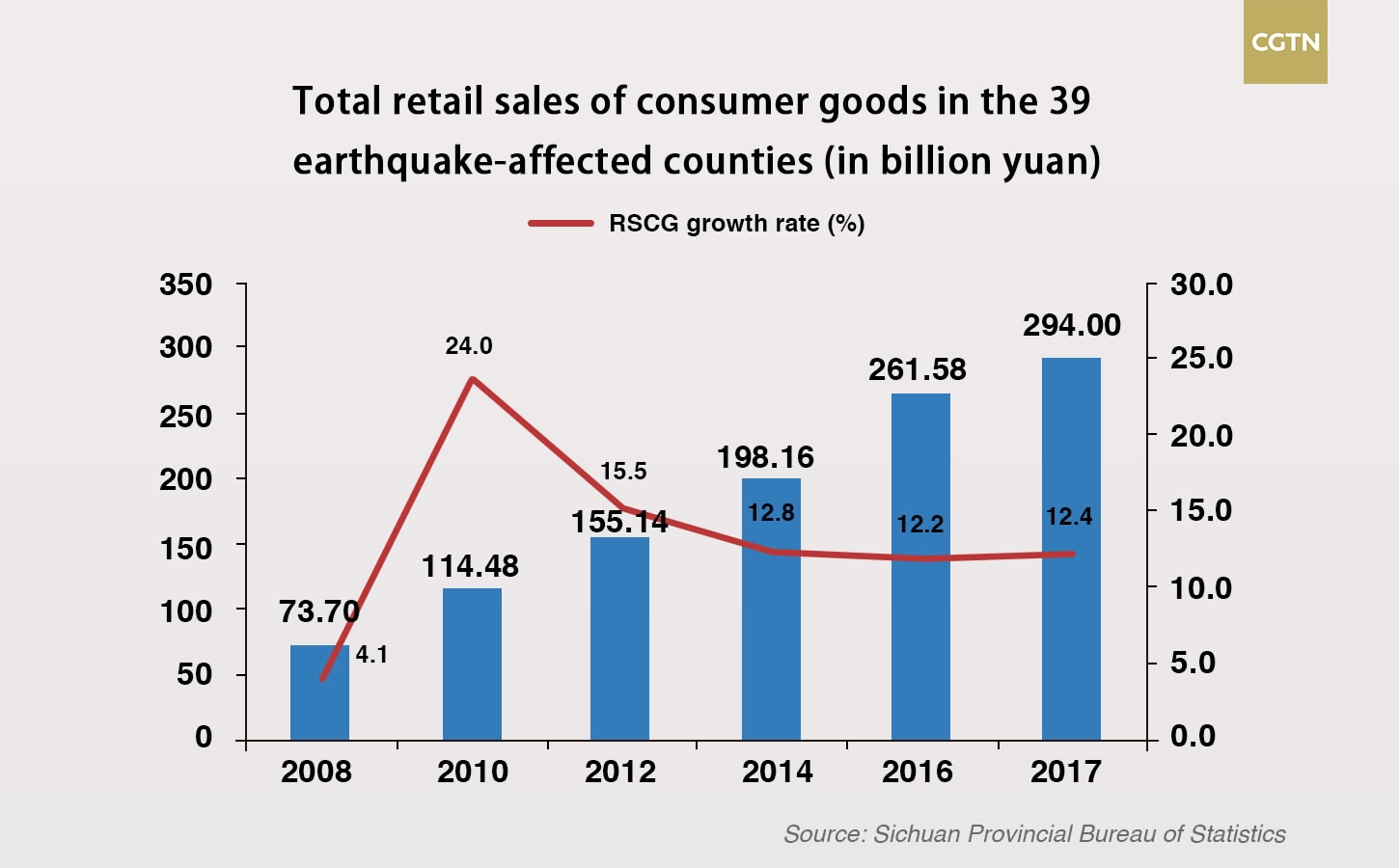Wenchuan earthquake: A decade of development in numbers
10 years have passed since the devastating 2008 Wenchuan earthquake, and the hardest-hit areas of Sichuan Province have rebuilt themselves after years of hard work.
10 years have passed since the devastating 2008 Wenchuan earthquake, and the hardest-hit areas of southwest China's Sichuan Province have rebuilt themselves after years of hard work, with GDP (gross domestic product) and GDP per capita both tripling in the past decade.

Aerial photo taken on May 1, 2018 shows the Wenchuan County, southwest China's Sichuan Province. On May 12, 2008, an 8.0-magnitude earthquake struck Wenchuan, razing almost the whole county to the ground. After ten years of hard work, Wenchuan has regained life. [Photo/Xinhua]
Remarkable economic output
The 39 earthquake-affected counties in Sichuan Province realized a total GDP of 682.97 billion yuan (107.27 billion US dollars) in 2017, three times the 224.73 billion yuan (35.30 billion US dollars) in 2008.
The average annual growth rate across the counties reached 11.8 percent, 0.8 percentage points higher than Sichuan Province as a whole.
The 10 most seriously affected counties maintained rapid GDP growth, achieving a total GDP of 165.75 billion yuan (26 billion US dollars) in 2017, 3.3 times more than in 2008. Their average annual growth rate was 13.1 percent, 2.1 percentage points higher than the provincial level.

Wenchuan County, the epicenter of the 2008 quake, registered a GDP growth rate of 15.3 percent. Among the other 10 worst-affected counties, Maoxian County, Beichuan County and Pingwu County saw average GDP growth of 15.6, 15.0 and 15.0 percent respectively.
Disposable income triples in 10 years
While the total economic output has continued to rise, the level of per capita GDP in the earthquake-affected areas has also increased significantly.
In 2017, the annual per capita GDP of the 39 counties reached 42,188 yuan (6,626 US dollars), three times the 13,836 yuan (2,174 US dollars) of 2008 and equivalent to 94.5 percent of the provincial average.
The annual per capita GDP of the 10 worst-affected counties reached 47,324 yuan (7,433 US dollars), 2,673 yuan (420 US dollars) higher than the provincial average and 3.5 times that of 2008 (13,609 yuan).
Back in 2008, the annual per capita disposable income of urban residents in the 39 counties was only 10,802 yuan (1,698 US dollars). In 2013, it surpassed 20,000 yuan (3,143 US dollars). Then in 2017, it exceeded 30,000 yuan (4,715 US dollars), 2.9 times that of 2008.
As for rural residents, annual per capita disposable income in 2017 in the 39 counties was 14,424 yuan (2,267 US dollars), 3.1 times that of 2008.
Investment impetus to support economy

In the past decade, the earthquake-struck areas have spared no effort in promoting investment and increasing consumer demand, in a bid to inject vitality into local economic development.
The scale of investment has steadily expanded. Since 2009, the 39 disaster-stricken counties have invested a large amount of funds for rehabilitation and industrial development.
Between 2009 and 2017, the 39 counties achieved more than 3.5 trillion yuan (550 billion US dollars) in fixed asset investment (FAI). The FAI in 2017 was 542.4 billion yuan (85.2 billion US dollars), 4.4 times that of 2008.
Accelerated consumer demand

The consumer goods market also witnessed significant development.
The total retail sales of consumer goods in the 39 counties exceeded 100 billion yuan (15.7 billion US dollars) in 2010, and 200 billion yuan (31.4 billion US dollars) in 2015. In 2017, it was close to 300 billion yuan (47.1 billlion US dollars), reaching 294 billion yuan (46.2 billion US dollars), which was four times that of the 2008 figure (73.7 billion yuan, or 11.6 billion US dollars).